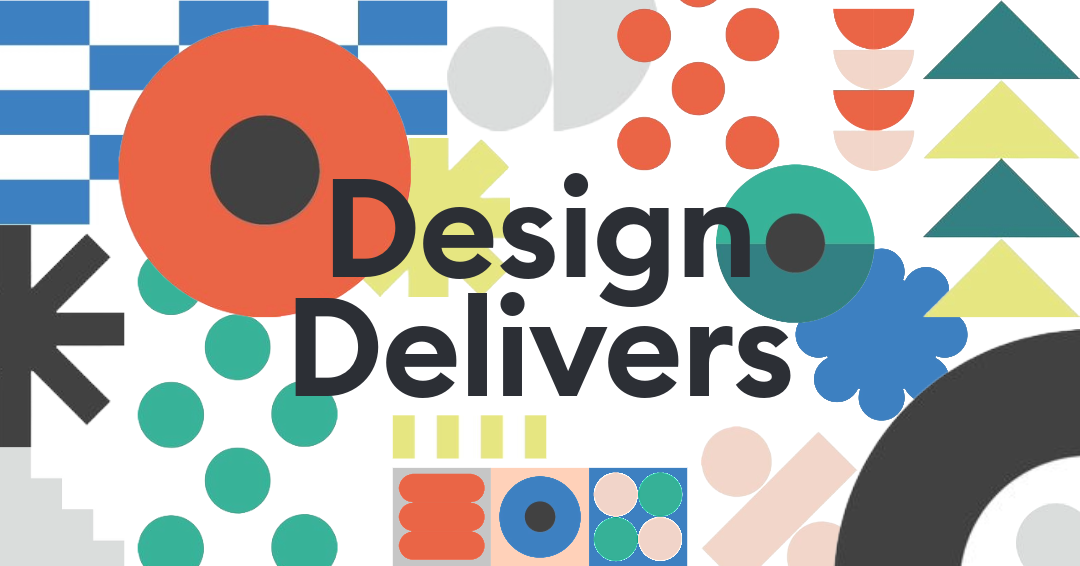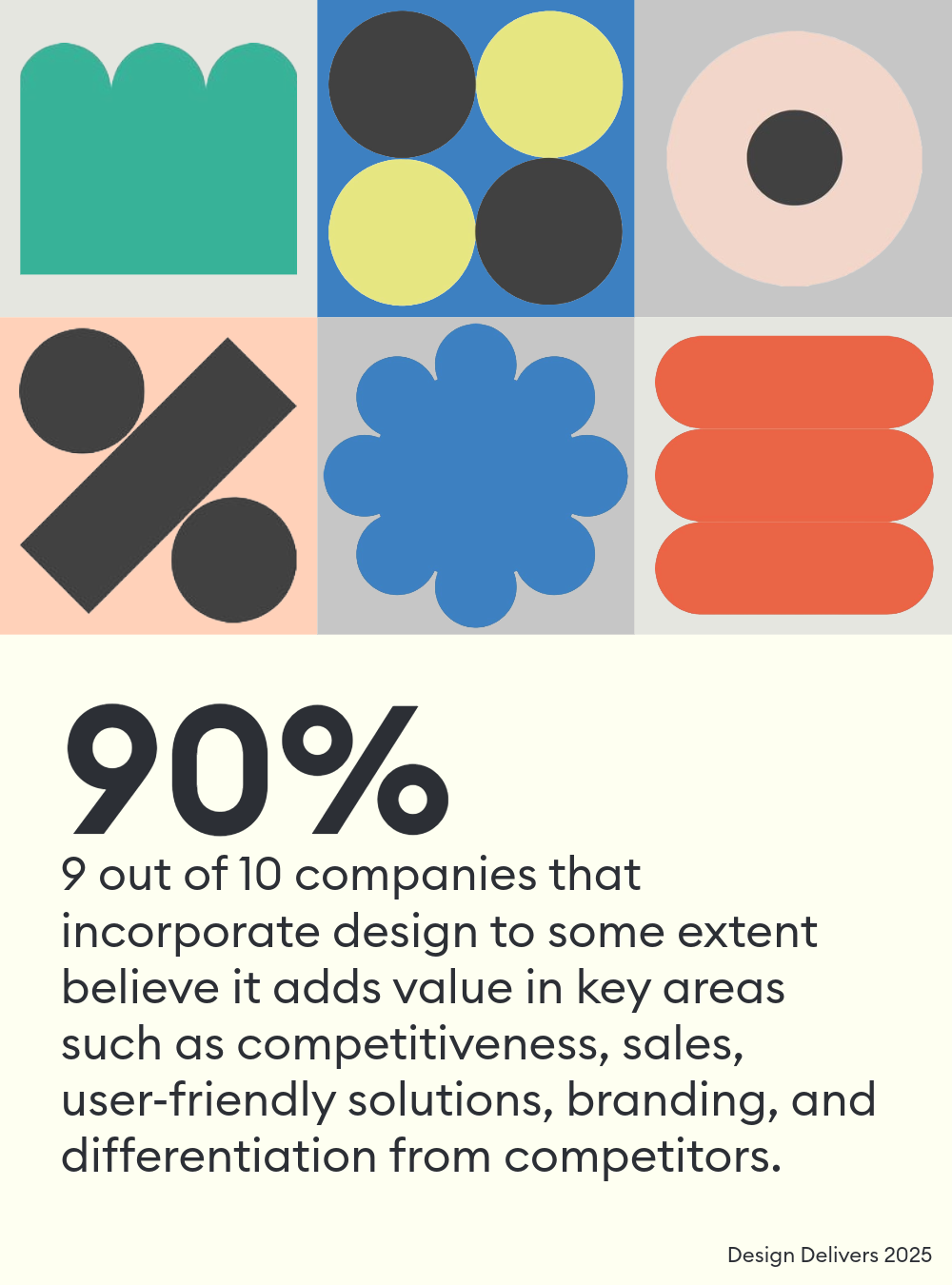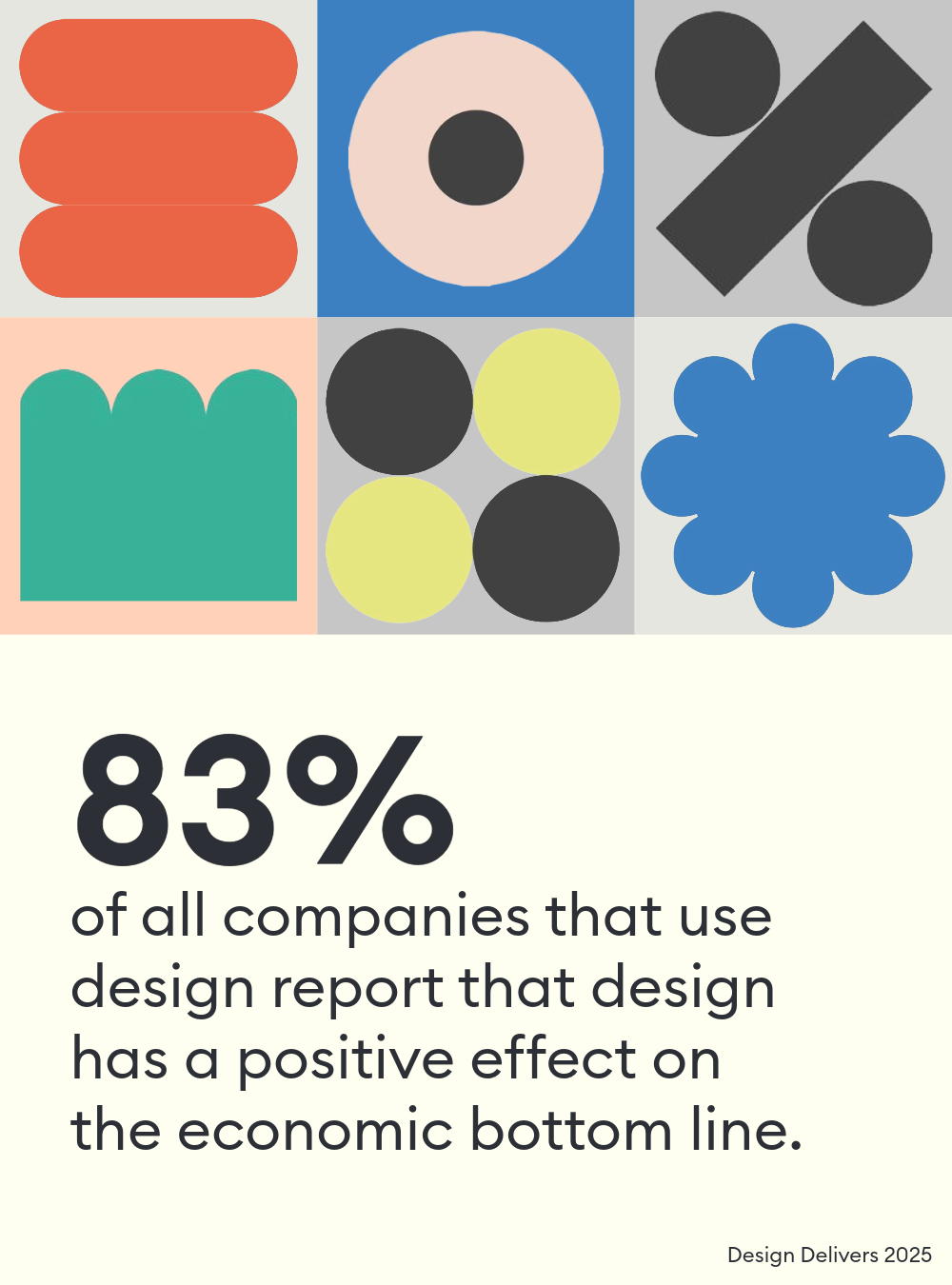When design is strategy, it delivers beyond profit. Design builds resilience, drives growth, and enables sustainable futures.
Design is a strategic enabler of competitiveness. Across industries, it strengthens innovation, resilience, and measurable business performance. The Design Delivers 2025 report documents this impact, showing that the more integrated design is into business strategy, the more value is created. Yet design’s role extends further. As global challenges reshape how we produce, consume, and live, design is increasingly called upon to create value that is not only economic, but also environmental and social, reimagining what design can be.

“Companies that integrate design deeply into their strategy are the ones that gain real competitive strength.”
From beliefs to measurable advantages
Design Delivers 2025 - developed by DDC — Danish Design Center and Danish Industry - comprises insights from over 600 Danish companies, presenting a consistent picture: companies that utilise design strategically achieve stronger results. 83% report a positive effect on their bottom line, and nine out of ten say it creates value for competitiveness, sales, brand identity, usability, and differentiation.
At Hyme Energy, visual design played a vital role in the early conceptual phase, securing both investments and partnerships with major corporations. At Novo Nordisk, design creates differentiation in markets where products are similar, turning better user experiences into a competitive advantage. However, design awareness at Novo Nordisk has evolved far beyond solely product development focus to a mindset that spans the entire value chain, ensuring coherence across research, manufacturing, clinical trials, and patient-facing services.
At Coloplast, design is referred to as User Experience DNA. Designers act as the voice of the user across projects that involve engineers, clinicians, and marketers. By embedding design methods early, Coloplast has been able to implement effective value creation across the organisation. And at GH Form, traditional craftsmanship has been reimagined to meet circular production requirements, transforming a former iron foundry into a design-led company that supplies sustainable materials to European cities.
These cases demonstrate that design goes far beyond making products look good as the final polish. Design reduces risk, accelerates innovation, creates coherence between disciplines and people, and, importantly, builds resilience in times of change.

“Design is part of the problem today. But that also means design can be part of the solution.”
Reimaging design
As global challenges redefine how we produce and consume, design plays a crucial role in shaping solutions that are both responsible and competitive. Danish design is well-positioned for this task. Its legacy of craftsmanship, simplicity, and aesthetics continues to unite purpose with beauty and quality with impact, enabling Danish design to evolve with the world’s needs.
Designing for a sustainable future is among the most complex challenges of our time, yet it builds directly on this tradition of beauty, quality, and human-centred design. Future solutions call for values that make design as responsible as it is desirable, expanding and reimagining the discipline from products to systems, services, and strategies that support sustainable and competitive transformation.
Design Delivers 2025 highlights this evolution. It shows that companies achieve the best results when design is understood not just as form, but as strategy, process, and mindset. In practice, this means design delivers measurable business value while keeping organisations resilient and helping adapt to environmental and societal demands.
This growing ability to deliver both business and societal value is what increasingly defines Danish design today. It remains a strategic source of competitiveness while driving responsibility, proving that growth, beauty, and sustainability can reinforce one another. Aesthetics, craftsmanship, and human centricity continue to guide this development, integrating circularity and sustainability so seamlessly that they become part of what makes design desirable, effective, and enduring.
In this way, Danish design not only maintains its legacy but also expands it. By reimagining what design can be, it positions itself to deliver competitiveness and quality of life in equal measure. This is a continuous journey, driven by collaboration, curiosity, and a belief in design’s power to create lasting impact — for both business, societies, and the world.
Design Delivers is developed by DDC — Danish Design Center and Danish Industry.
*DDC article: ‘Dansk design i en brydningstid’ (in Danish).
The full Design Delivers 2025 report is available here (in Danish).
.png)

.png)

.png)

.png)
.png)
.png)